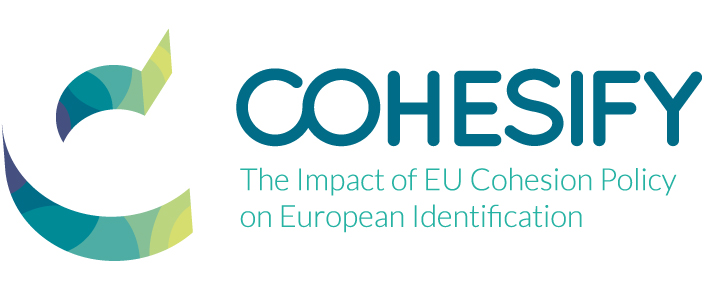
Rethinking post-2020 Cohesion Policy: structural transformation and inclusive growth
June 26, 2017
What can we learn from the initiative ‘Interreg Volunteer Youth’ to make EU communication better?
October 12, 2017
For many, Cohesion policy comes down to direct results visible just around the corner, in close proximity, namely new roads, refurbished buildings and professional trainings teaching new skills. However, my colleagues and I have decided to take a step back and embrace the policy with a broader scope. This perspective allowed us to look at the statistics showing the allocation of funds, the number of newly created jobs or the absorption indicators.
In our latest report for the COHESIFY project, we decided to grasp the big picture of the policy by browsing through the available data and organising it all in one place. This includes the financial statistics as well as results of Cohesion policy in all European regions in the years 2007 to 2013.
Our first surprise was the lack of fully comparable data. What was most problematic was the assessment of results that were gathered only for programmes and member states (and not for particular regions), often using different methodologies. We are glad that this problem has been noticed and that in the next programming period data will be gathered following standardised rules which will make all the assessment much easier.
The available financial data allowed us to prepare a set of maps showing allocation and absorption rates in regions. Thanks to this exercise, we made some interesting observations. While the percentage of funds allocated to building infrastructure or stimulating innovation is strongly linked to the level of economical development of the regions, the funds aiming to increase the well-being (quality of life) of citizens are distributed in a less predictable manner. They are most prominently used in Baltic states and in Portugal as well as in some regions in the Netherlands and Germany. Moreover, we have also looked into the absorption rates in all the above-mentioned categories (that is: infrastructure, innovation and well-being). The pattern is similar regarding the structure of funds. The wealthier regions prioritise innovation, while the developing regions invest in infrastructure. Despite this general rule, we have noticed some exceptions. Resources for infrastructure were used relatively rapidly in regions in Northeast Spain, Ireland and in the UK, while the funds for innovation were absorbed relatively quickly in Bulgaria and Hungary.
Our first surprise was the lack of fully comparable data. What was most problematic was the assessment of results that were gathered only for programmes and member states (and not for particular regions), often using different methodologies. We are glad that this problem has been noticed and that in the next programming period data will be gathered following standardised rules which will make all the assessment much easier.
The available financial data allowed us to prepare a set of maps showing allocation and absorption rates in regions. Thanks to this exercise, we made some interesting observations. While the percentage of funds allocated to building infrastructure or stimulating innovation is strongly linked to the level of economical development of the regions, the funds aiming to increase the well-being (quality of life) of citizens are distributed in a less predictable manner. They are most prominently used in Baltic states and in Portugal as well as in some regions in the Netherlands and Germany. Moreover, we have also looked into the absorption rates in all the above-mentioned categories (that is: infrastructure, innovation and well-being). The pattern is similar regarding the structure of funds. The wealthier regions prioritise innovation, while the developing regions invest in infrastructure. Despite this general rule, we have noticed some exceptions. Resources for infrastructure were used relatively rapidly in regions in Northeast Spain, Ireland and in the UK, while the funds for innovation were absorbed relatively quickly in Bulgaria and Hungary.
Our most difficult task was to create maps summarising the results of Cohesion Policy. Because of the data inconsistency, we decided to focus rather on the regional impact on a given topic (for example, creating new jobs) than efficiency per se. Our analysis shows the results of Cohesion policy differ among regions also because of the way the data is collected and monitored and reported.
We finished our report with an analysis of the relationship between Cohesion policy and the change of regional GDP during financial crisis. We found that while the amount of Cohesion policy funding is not correlated with growth rate, the funds allocated to fostering innovation help boost growth in all EU regions. Financing of basic infrastructure is negatively correlated with growth, but only in more developed regions (so called Objective 2 regions). This means that in less developed regions investing in infrastructure can accelerate development. However, the lack of a clear relationship with growth rate suggests that many projects do not fulfil their potential.
You can find the entire report here .
Jakub Rok EUROREG UW

